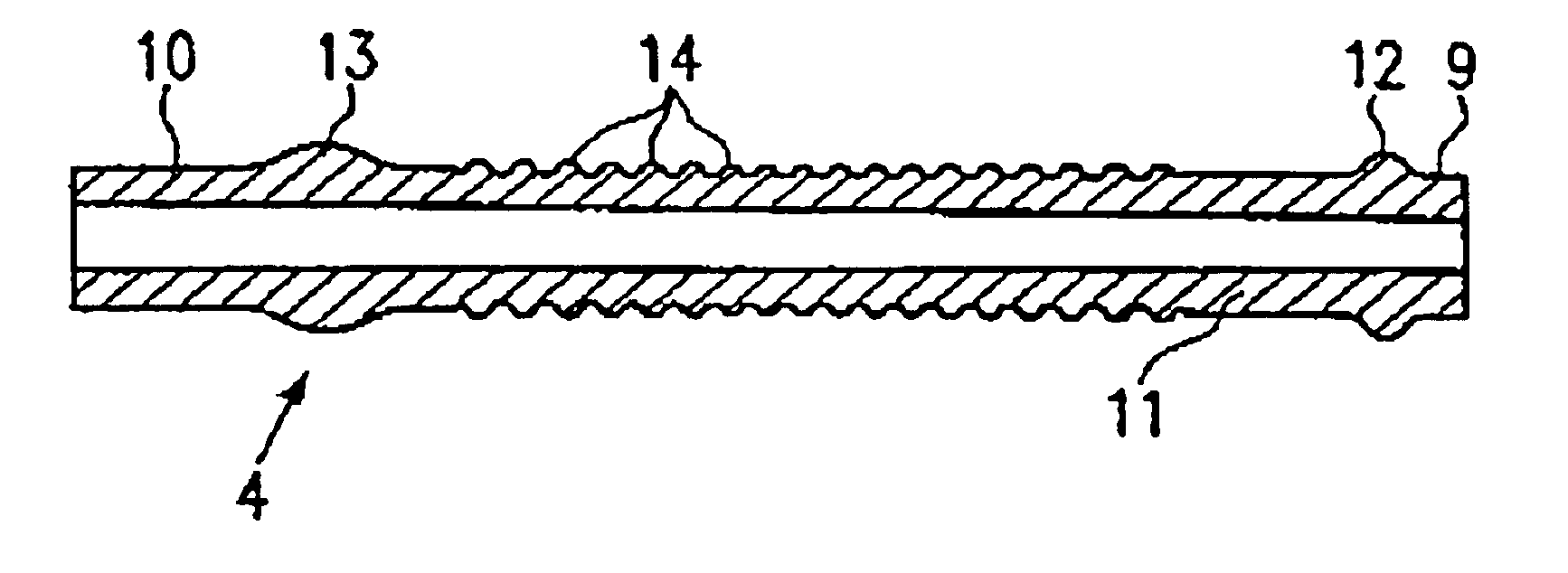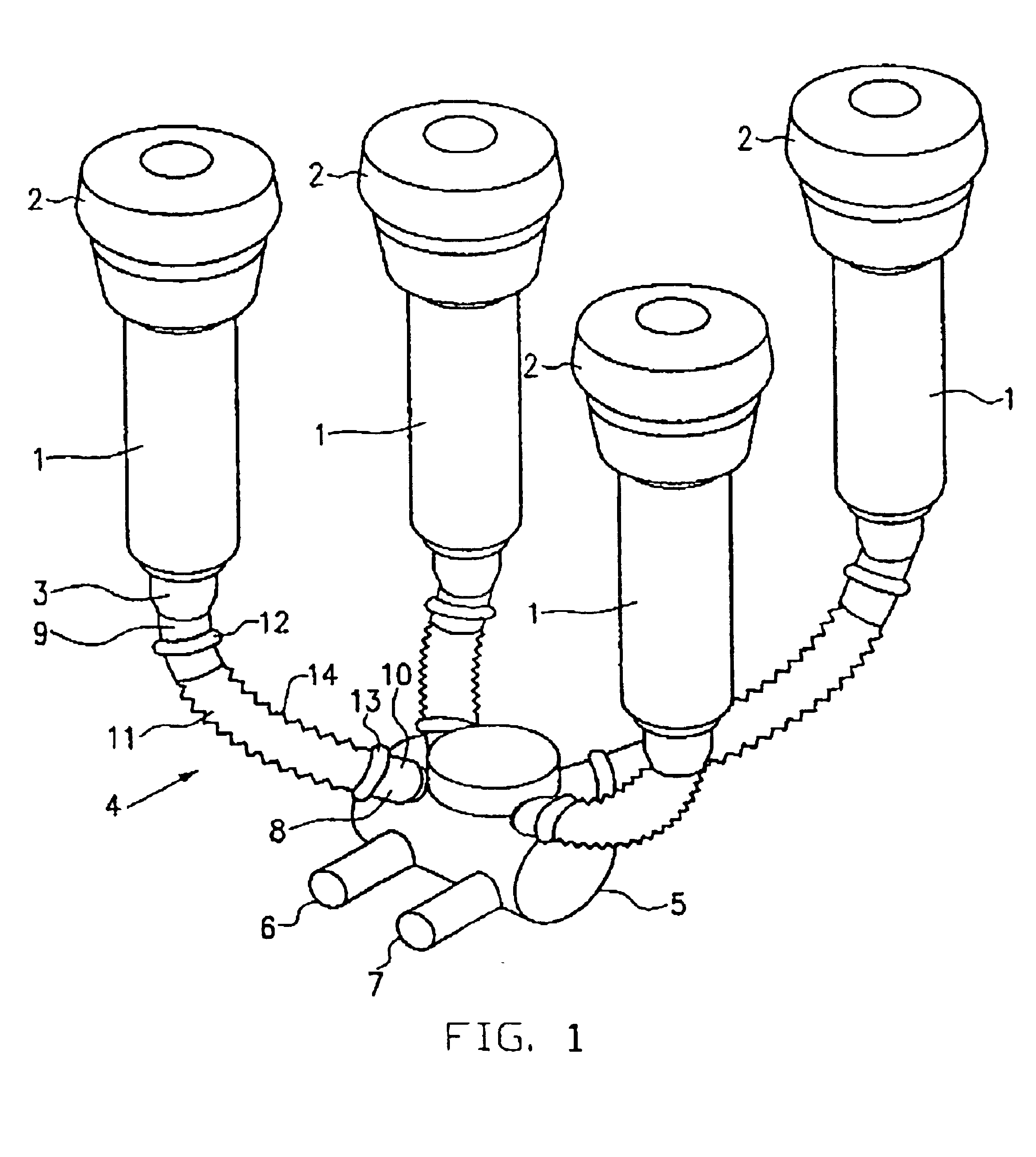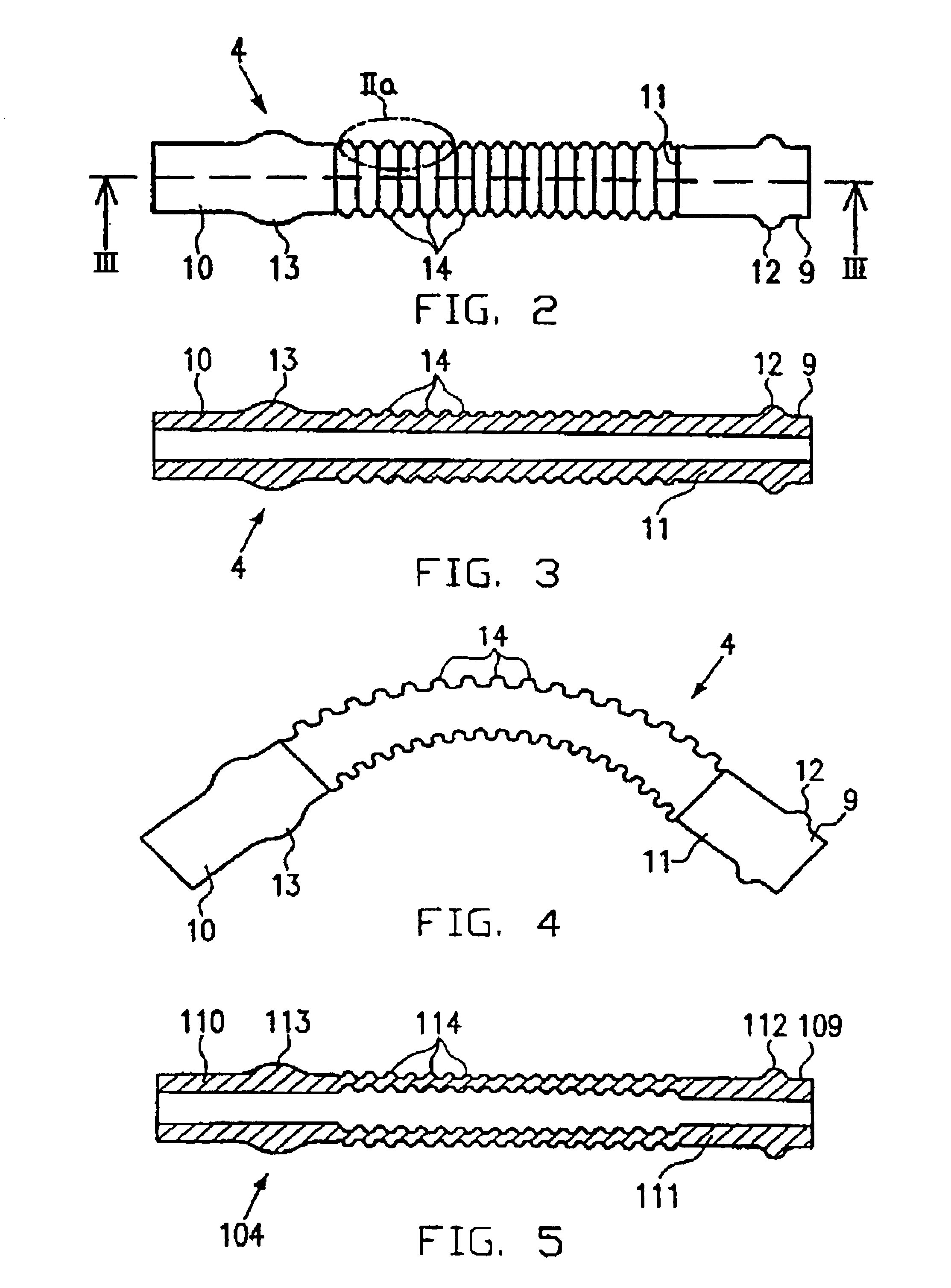Flexible milk hose for an automatic milking plant
a flexible, milking plant technology, applied in the field of milk hoses, can solve the problems of irritation of animals, marked restriction of the flexibility of the short milk hose, light shock or vibration, etc., and achieve the effects of improving the wall thickness, good stability against deformation, and moderate pri
- Summary
- Abstract
- Description
- Claims
- Application Information
AI Technical Summary
Benefits of technology
Problems solved by technology
Method used
Image
Examples
Embodiment Construction
[0036]A first embodiment is now explained making reference to FIGS. 1, 2 and 3.
[0037]FIG. 1 shows the fundamental structural design of a milking unit in which short milk hoses are used in accordance with one embodiment of the present invention. Reference numeral 1 stands for the four teat cups at the upper edge of which the bulge of the teat rubber 2 is formed. The outlet neck 3 is arranged at the other end of the teat cup 1. The teat rubber 2 extends in the interior of the teat cup 1 down to the outlet neck 3. An inlet neck for the connection conduit by means of which fresh air is blown into the area between the teat cup 1 and the teat rubber 2 so as to change over from the suction phase to the relief phase is not shown in FIG. 1 for the sake of clarity. The outlet necks 3, which are formed on or attached to the teat rubbers, have short milk hoses 4 connected thereto. Instead of being separate parts, the teat rubber and the short milk hoses can also be implemented as an integral co...
PUM
 Login to View More
Login to View More Abstract
Description
Claims
Application Information
 Login to View More
Login to View More - R&D
- Intellectual Property
- Life Sciences
- Materials
- Tech Scout
- Unparalleled Data Quality
- Higher Quality Content
- 60% Fewer Hallucinations
Browse by: Latest US Patents, China's latest patents, Technical Efficacy Thesaurus, Application Domain, Technology Topic, Popular Technical Reports.
© 2025 PatSnap. All rights reserved.Legal|Privacy policy|Modern Slavery Act Transparency Statement|Sitemap|About US| Contact US: help@patsnap.com



